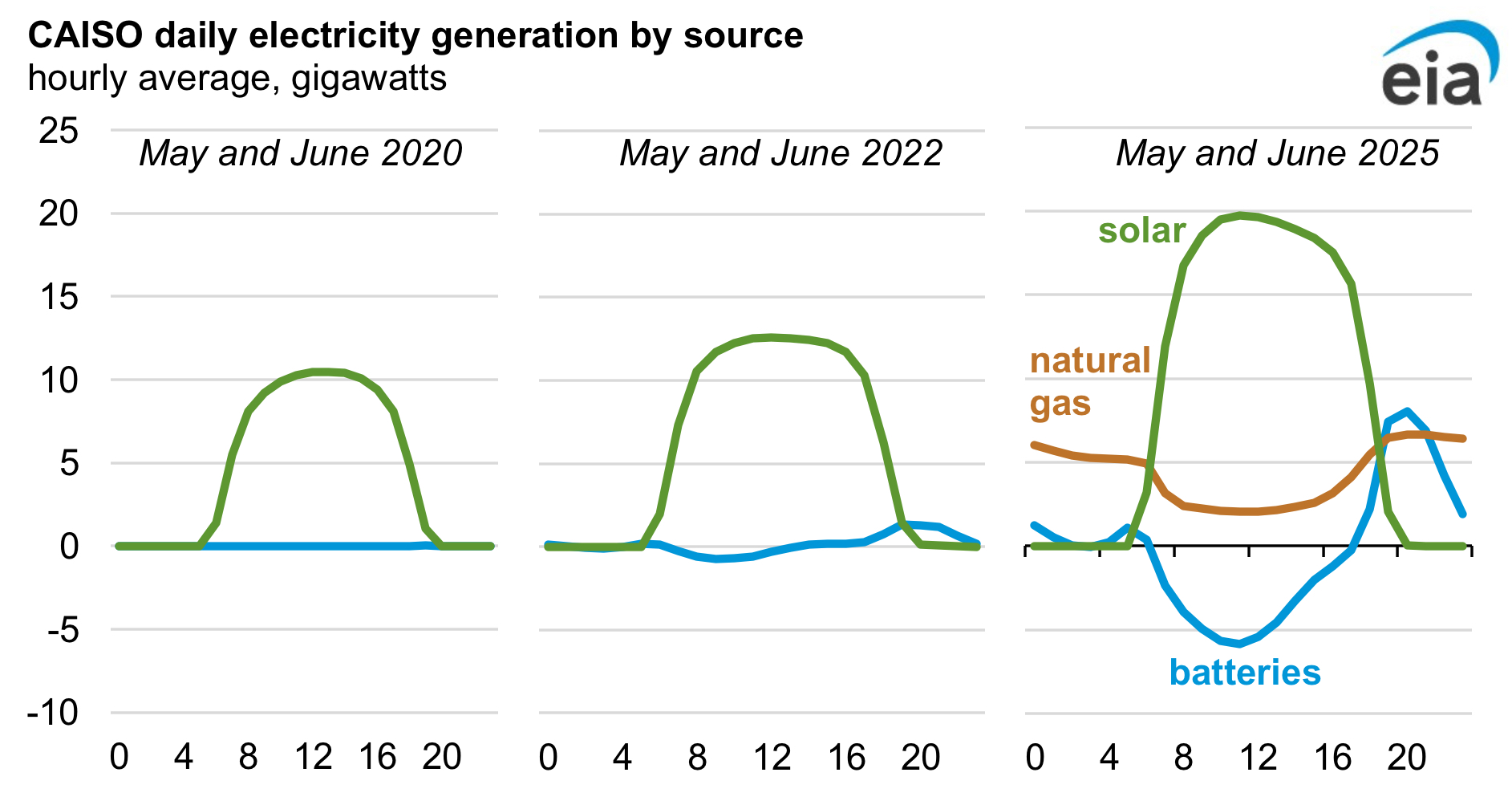If you add in nuclear, then the US has reached a grid that is 40 percent emissions-free over the first nine months of 2025. That’s up only 1 percent compared to the same period the year prior. And because coal emits more carbon than natural gas, it’s likely the US will see a net increase in electricity-related emissions this year.
If you would like to have a reason to feel somewhat more optimistic, however, the EIA used the new data to release an analysis of the state of the grid in California, where the production from utility-scale solar has nearly doubled over the last five years, thanks in part to another 17 percent increase so far in 2024.
Through 2023, it was tough to discern any impact of that solar production on the rest of the grid, in part due to increased demand. But since then, natural gas use has dropped considerably (it’s down by 17 percent so far in 2025), placing it at risk of being displaced by solar as the largest source of electricity in California as early as next year. This displacement is happening even as California’s total consumption jumped by 8 percent so far in 2025 compared to the same period last year.

Massive solar growth plus batteries means less natural gas on California’s grid. Credit: US EIA
The massive growth in solar has also led to overproduction of power in the spring and autumn, when heating/cooling demands are lowest. That, in turn, has led to a surge in battery construction to absorb the cheap power and sell it back after the Sun sets. The impact of batteries was nearly impossible to discern as recently as 2023, but data from May and June of 2025 shows batteries pulling in lots of power at mid-day, and using it in the early evening to completely offset what would otherwise be an enormous surge in the use of natural gas.
Not every state has the sorts of solar resources available to California. But the economics of solar power suggest that other states are likely to experience this sort of growth in the coming years. And, while the Trump administration has been openly hostile to solar power from the moment it took office, so far there is no sign of that hostility at the grid level.